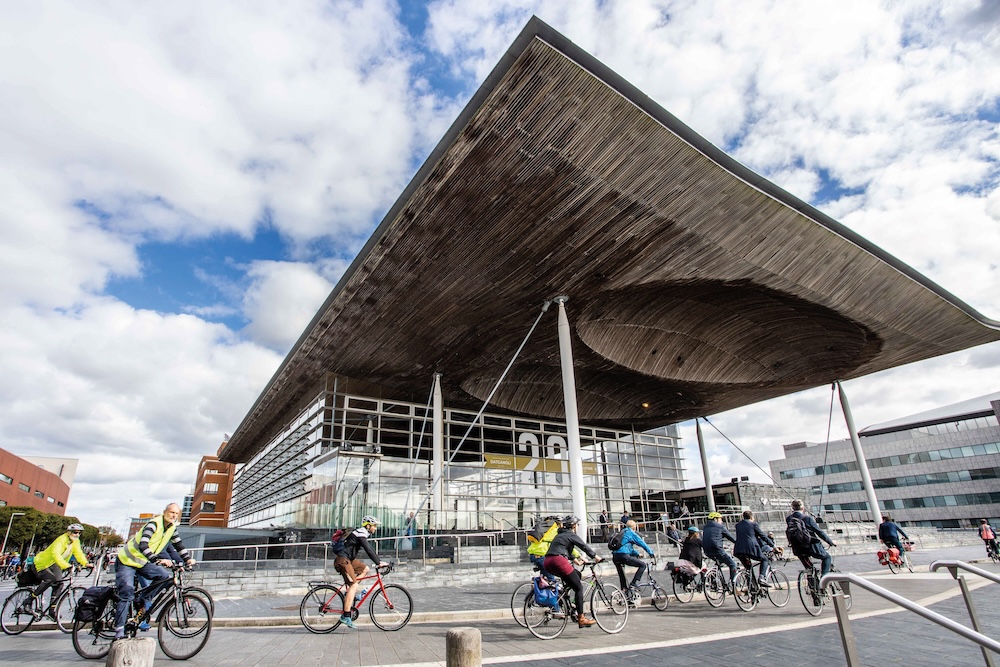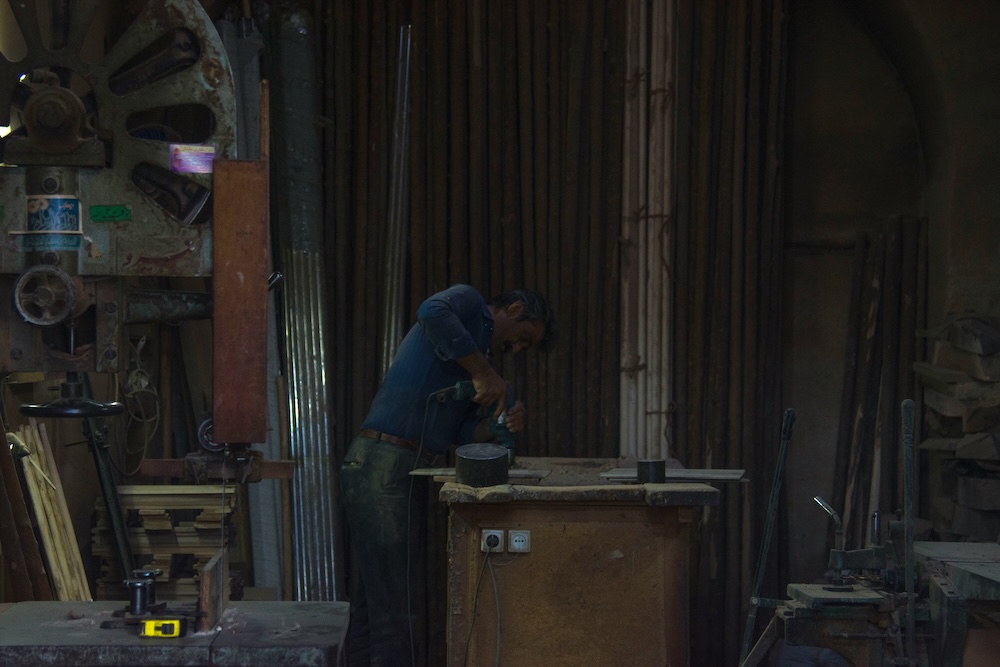Cycling UK’s Tomos Owens makes the case for investment in active travel to bring health and economic benefits.
Imagine a wonder-drug that could instantly boost your mood and improve your physical health, reducing your risk of heart disease and cancer. Imagine if this drug also enhanced the health of those around you and contributed to a cleaner, greener environment. Now imagine that it came with almost no side effects and got better the more you used it. Surely, everyone would be clamouring to get their hands on this miracle drug—like the frenzy to find a Golden Ticket in Willy Wonka and the Chocolate Factory. What if I told you that this Golden Ticket already exists? What if I told you, though, that it isn’t a drug at all, but something as simple as riding a bike?
The health benefits of regular cycling—whether for transport or leisure—are profound. Yet many people in Wales are unable to access this transformative activity due to both real and perceived dangers on roads designed with cars in mind. While some women do cycle in these conditions, surveys show that 90% of women would cycle more if safe, protected routes were available. Now consider this: if access to my imagined wonder-drug were restricted to men alone, there would be an outcry over such blatant inequality. And yet, when safe cycling infrastructure is lacking, the majority of women are effectively excluded from enjoying the benefits of cycling due to safety concerns. Infrastructure that prioritises cars not only undermines health and happiness, but also creates a system where women face disproportionate barriers to participation in active travel.
The importance of ringfenced funding
Wales has made great strides in recent years, investing in active travel and adopting a bold (and successful) speed reduction agenda. Whilst lower speeds are a step in the right direction, not only for the safety of cyclists but for pedestrians and drivers too, this alone is not enough to get Wales travelling actively.
Infrastructure that prioritises cars not only undermines health and happiness, but also creates a system where women face disproportionate barriers to participation in active travel.
Well-designed, well thought-out, and separated cycle lanes are the way to unlock transformational change. Yet, without a commitment to the stable ringfenced funding that previous administrations have provided, we risk stalling the great progress Wales has made.
Ringfenced funding for active travel is essential for ensuring resources are dedicated to safe walking and cycling routes. Without protected budgets, funding risks being diverted to other transport projects that perpetuate car dependency. The Active Travel (Wales) Act 2013, a world-first requiring integrated walking and cycling networks, remains visionary, but can only succeed with consistent, secure investment.
Without dedicated funding, projects become fragmented and stalled, leading to incomplete and disjointed networks that actively discourage active travel. Conversely, sustained investment builds comprehensive, connected routes that make walking and cycling practical, safe, and attractive.
Health and wellbeing benefits
Investing in active travel is one of the most cost-effective ways to improve public health. According to Public Health Wales, physical inactivity costs the NHS in Wales £314 million annually. Cycling to work or school lowers the risk of heart disease, cancer, and premature death. The BMJ’s 2017 study found that cycling to work reduces the risk of heart disease by 46% and cancer by 45%.
Innovative. Informed. Independent.
Your support can help us make Wales better.
Physical inactivity contributes to one in six deaths in the UK. Investing in infrastructure that encourages daily walking and cycling can reverse this trend, reducing healthcare costs and improving life expectancy, particularly in areas with significant health inequalities.
Economic benefits
Active travel investment offers extraordinary economic returns. Cycling projects typically yield benefits of £5.62 per £1 invested or higher, with some delivering returns of up to £13 per £1. These returns come from reduced congestion, lower healthcare costs, and higher productivity. Even a modest 10% increase in cycling could generate millions in health and productivity savings annually in Wales.
Local businesses also benefit. Pedestrian- and bike-friendly high streets see increased footfall and sales. For instance, Cycle Superhighways in London boosted retail sales significantly. Wales’s iconic Taff Trail and Lon Las Cymru already draw tourists, supporting local economies. Expanding and improving cycling infrastructure could position Wales as a premier destination for cycling tourism, much like Scotland, where cycling tourism contributes £345 million per year.
Achieving Wales’ legally binding net-zero targets requires a decisive shift from car travel to walking and cycling.
Environmental and climate advantages
Transport accounts for 17% of Wales’ greenhouse gas emissions. Achieving Wales’ legally binding net-zero targets requires a decisive shift from car travel to walking and cycling. Active travel infrastructure reduces emissions by making sustainable choices feasible and appealing.
According to Sustrans, shifting just 10% of short journeys from cars to bikes could cut CO₂ emissions by 133,000 tonnes annually. Additionally, bike-friendly networks improve urban air quality, can enhance green spaces, and support wildlife habitats. Prioritising cycling and walking helps create cleaner, healthier, and more liveable communities.
Social Equity and community connectivity
Investing in active travel promotes social equity. Affordable, reliable transport options improve access to education, jobs, and services for those without cars. Designing inclusive infrastructure benefits vulnerable groups—children, older adults, and people with disabilities—creating safer, more connected communities.
Robust debate and agenda-setting research.
Support Wales’ leading independent think tank.
Safe crossings, cycle lanes, and reduced traffic speeds transform roads from car-dominated zones into shared public spaces. This reimagining of transport infrastructure strengthens community ties and enhances quality of life.
The Welsh Government’s leadership in active travel policy has been groundbreaking, but continued, ringfenced investment is critical to realising its vision. The benefits—improved health, a stronger economy, a cleaner environment, and more equitable access to transport—are too significant to ignore. Let’s not squander the progress we’ve made. Now is the time to double down on investment and secure a healthier, happier, and more prosperous future for Wales.
All articles published on the welsh agenda are subject to IWA’s disclaimer. If you want to support our work tackling Wales’ key challenges, consider becoming a member.





